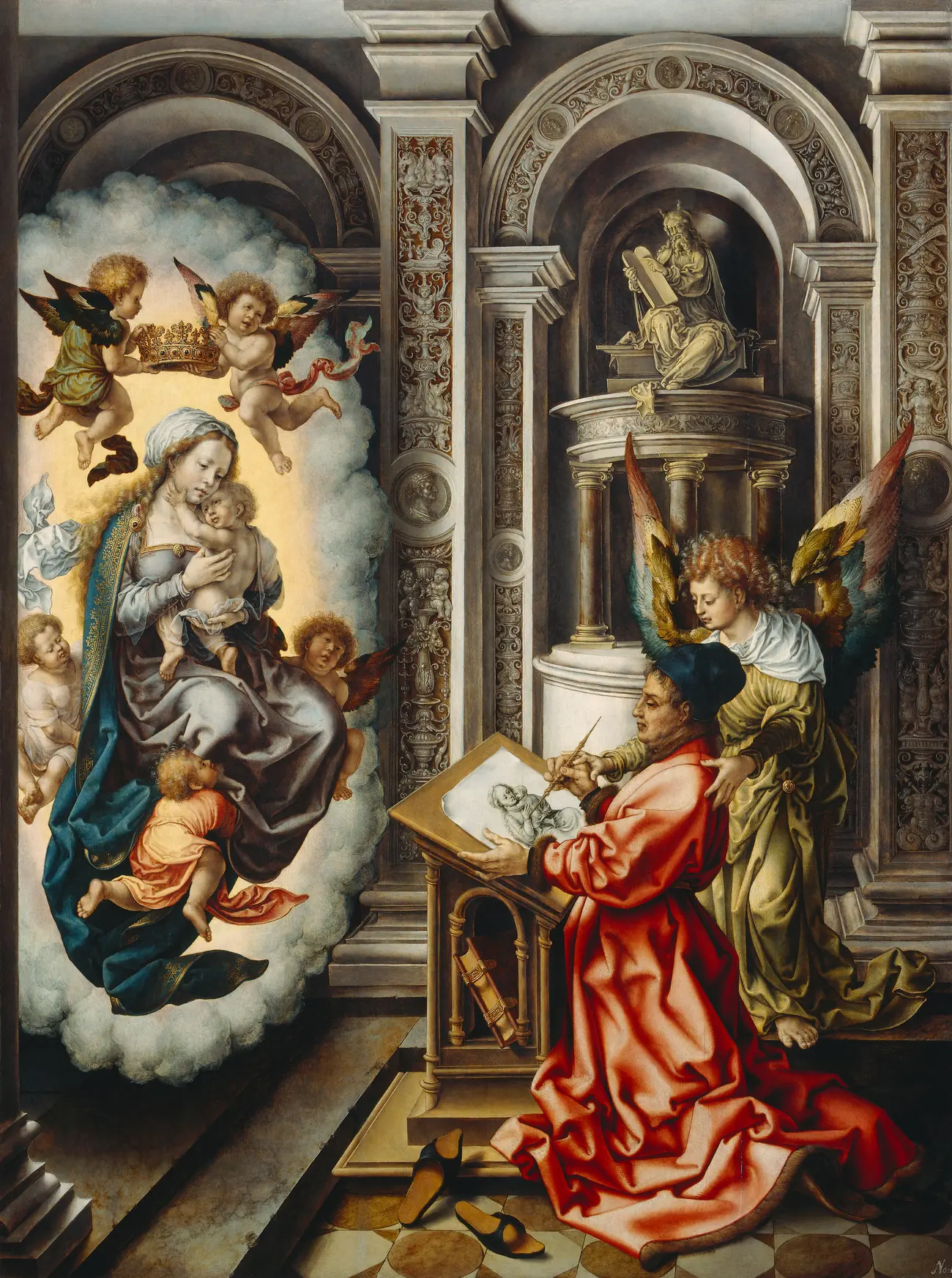An exclusive view
An angel with gorgeous wings leads the hand of the painter, who is the hero of the piece. St. Luke wears a heavy red gown edged with fur.
Beneath his eyes a delicate drawing in ink takes shape. The artist is nearly finished, for I have hovered in the room for some time. Through the power of divine inspiration, the very first portrait of me has been fashioned.
Deutlich steht Gossaert hier am Übergang von der Spätgotik zur Renaissance. Spätgotisches Faltenwerk und italienische Quattrocentoarchitektur treffen aufeinander. Der hl. Lukas betrachtet die mit Engelshilfe soeben fertiggestellte Zeichnung der Madonna, die dem Heiligen in einer Wolke erschienen ist. Wegen der in den Niederlanden zu dieser Zeit unüblichen Darstellung der Madonna als Vision hat man italienische Vorbilder auch für Gossaerts Komposition angenommen.
Title:
St. Luke Painting the Madonna
Artist:
Jan Gossaert, gen. Mabuse (1478 Maubeuge - 1532 Middelburg)
Time:
about 1520
Only he can see the angel and me.
The invisible is made visible. A vision is transformed into the material. Thoughts become pictures.
Moses must look on helplessly, a stone shadow of himself. He thrones above the scene ensconced in magnificent Renaissance architecture, a pale reminder. The Old Testament prohibition of graven images having long since been qualified.
Yet: recently disagreement has been voiced on this matter. Martin Luther has just revived the discussion. Can one secure salvation by donating painted pictures? Should not this “mistaken” use of pictures be ended without delay?
In these ideologically restless times Jan van Gossaert apparently adopted a moderate position. He did not place the scene in a luxuriously appointed atelier, but within the precincts of a church.
Above all, I myself, in strict accordance with orthodox tradition, am not a model of flesh and blood, but a divine apparition.
Angles bear me.
A suggestion of luxury nonetheless surrounds the painter—I already remarked on his costly garments.
He and his colleagues joined together in the many guilds of St. Luke that were established in art centres according to commissions and material encouragement. Has the artist here been reformed? Will he cast off his fine raiment as he has already done with his shoes?
This question remains open.
More from the series #I am Mary
Explore Kunstgeschichten
Discover varied essays on a wide range of artworks from our extensive collection.
